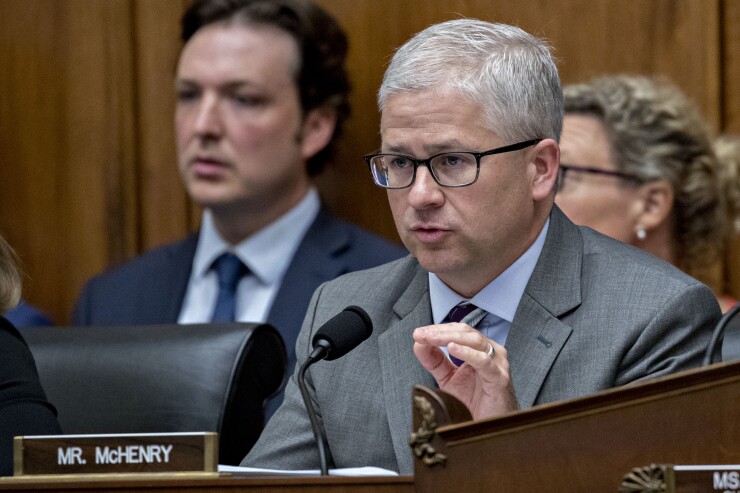
On April 17,
Stablecoins have proven to be anything but stable. More than twenty stablecoins failed between 2016 and 2022. Every one of the world's leading stablecoins lost its "peg" to the U.S. dollar (or other reference value) on multiple occasions between 2019 and 2023. Many "depegging" incidents occurred after market shocks, such as the TerraUSD stablecoin collapse in May 2022, cryptocurrency exchange FTX's bankruptcy in November 2022 and the failure of Silicon Valley Bank in March 2023. SVB's downfall triggered a near-fatal run by holders of USDC, the world's second largest stablecoin, issued by Circle. USDC recovered its $1 peg only after federal regulators agreed to rescue SVB's uninsured depositors, thereby protecting $3.3 billion of uninsured deposits held by Circle at SVB.
Stablecoin runs resemble the runs on uninsured deposits that have occurred repeatedly during U.S. financial crises stretching from the 19th century through 2023. The federal government has incurred huge costs in protecting uninsured depositors (particularly at large depository institutions) during crises from the 1970s to the present.
Financial crises have demonstrated that deposits and similar short-term financial claims are highly vulnerable to systemic runs whenever there are serious doubts about the ability of obligors to repay those claims in a timely manner. The likelihood of systemic runs on such claims is magnified if the federal government does not regulate them in a robust and effective manner and does not provide a safety net to assure their timely repayment.
The Lummis-Gillibrand bill would allow state-chartered trust companies and federally chartered trust companies to issue stablecoins without obtaining federal deposit insurance and without complying with federal laws governing banks insured by the Federal Deposit Insurance Corp. The bill would encourage the rapid growth of stablecoins — a hazardous form of deposit-like "runnable" liabilities — without establishing strong and effective federal oversight to ensure the soundness of stablecoin issuers and without providing a federally supervised fund to guarantee the timely repayment of stablecoins. The bill would greatly increase the likelihood that future runs on stablecoins could trigger systemic crises with disastrous consequences for our financial system, economy and society.

The Lummis-Gillibrand bill represents a deeply misguided and perilous departure from historical practice and sound financial regulatory policies. All deposit-taking national banks have been required to obtain federal deposit insurance since Congress established the FDIC in 1933. Similarly, prior to 2019, every state required state-chartered banks to obtain federal deposit insurance if they accepted deposits from the public.
State laws requiring federal deposit insurance for deposit-taking banks were the product of hard lessons learned during the savings and loan and banking crises of the 1980s and early 1990s. During those crises, systemic failures occurred among state-chartered depository institutions that relied on state-sponsored deposit insurance programs. State-sponsored deposit insurance systems collapsed because they were poorly regulated, did not have sufficient funds to cover their deposit obligations and were not backstopped by either a federal guarantee or a lender of last resort like the Federal Reserve. The downfall of state-sponsored deposit insurance schemes inflicted punishing losses on depositors and disrupted local economies in several states, including Maryland, Nebraska, Ohio and Rhode Island.
In 2019, Wyoming ignored the lessons of history and began to issue charters for special-purpose crypto banks that accept deposits of crypto assets but do not have federal deposit insurance. Congress should not repeat Wyoming's dangerous, high-stakes gamble by allowing uninsured, poorly regulated financial institutions to issue stablecoins. Stablecoins are volatile, deposit-like liabilities that have repeatedly experienced devastating runs because they lack a federal guarantee and are not subject to robust federal regulation.
In November 2021, the President's Working Group on Financial Markets, the FDIC and the Office of the Comptroller of the Currency issued a report highlighting the potential dangers that stablecoins pose to consumers, investors and our financial system. To address those threats, the President's Working Group on Financial Markets' report recommended that Congress should pass legislation prohibiting persons other than federally insured depository institutions from issuing stablecoins.
Congress should implement the PWG's wise recommendation by rejecting the Lummis-Gillibrand bill and by adopting legislation requiring all issuers and distributors of stablecoins to be FDIC-insured banks. Such legislation would ensure that all stablecoin providers must comply with the crucial safeguards embodied in federal laws governing FDIC-insured banks (including federal deposit insurance coverage funded by the payment of risk-based premiums). Such legislation would affirm that stablecoins must be offered to the public in a safe and well-regulated manner that does not threaten consumers, investors or our financial system.
The Lummis-Gillibrand bill has many other serious defects that warrant its rejection. As I explained in a recently published





